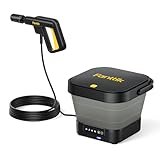How to Effortlessly Program TPMS Sensors Toyota: A Comprehensive Guide

When it comes to maintaining a Toyota, few things are as critical as keeping your tires in check. You might overlook tire pressure monitoring systems (TPMS) as just another dashboard light, but these sensors are more than just a warning signal—they’re your safety net on the road. If you’ve ever struggled with TPMS lights flashing after installing new tires or replacing sensors, you know how frustrating it can be. Luckily, programming TPMS sensors in a Toyota is simpler than it sounds once you understand the tools, steps, and tricks involved. In this guide, we’ll walk you through how to effortlessly program TPMS sensors Toyota—from understanding the technology to troubleshooting common issues—so your vehicle stays safe and efficient.
In This Article
- 1 Understanding TPMS Sensors in Your Toyota
- 2 Essential Tools for Programming Toyota TPMS Sensors
- 3 Preparing Your Toyota for TPMS Reset
- 4 Initial Setup Procedures: Getting Ready for Programming
- 5 Step-by-Step Sensor Programming
- 6 Troubleshooting Common TPMS Programming Issues
- 7 Post-Programming Checks: Ensuring TPMS Accuracy
- 8 Maintenance and Upkeep Tips for Toyota TPMS
- 9 Embracing TPMS Technological Advances
- 10 Common Mistakes to Avoid When Programming TPMS Sensors
- 11 Frequently Asked Questions (FAQs)
- 12 Expert Tips for a Smooth TPMS Experience
- 13 Conclusion: Safe, Smart, and Hassle-Free
Understanding TPMS Sensors in Your Toyota
Before jumping into programming, it’s essential to understand what TPMS sensors are and why they matter. These small devices, embedded inside your tires, continuously monitor air pressure and send real-time data to your Toyota’s onboard computer. When tire pressure drops below or rises above recommended levels, the system alerts you. This isn’t just about convenience—it’s about safety, fuel efficiency, and extending tire life.
Toyota uses two main types of TPMS: direct and indirect. Direct TPMS uses sensors inside each wheel to measure pressure accurately, while indirect TPMS relies on the ABS system and wheel speed sensors to detect inconsistencies in tire pressure. Understanding which system your Toyota has will determine the type of programming required. For instance, direct TPMS requires sensor activation tools, whereas indirect systems often need simple resets. By grasping these nuances, you ensure your programming process is effective and your sensors work flawlessly.
Essential Tools for Programming Toyota TPMS Sensors
Programming TPMS sensors Toyota correctly isn’t about guesswork—it requires the right tools. Here’s what you’ll need:
-
Toyota Techstream Software: This is Toyota’s official diagnostic and programming tool. It allows direct communication with your vehicle’s onboard computer and ensures precise sensor activation.
-
TPMS Activation Tool: A universal TPMS tool works for multiple vehicles, including Toyota. It communicates with each sensor individually, ensuring the system recognizes them.
-
Tire Pressure Gauge: Even after programming, accurate tire pressure verification is essential. Don’t rely solely on the dashboard; cross-check manually.
By investing in these tools, you not only save yourself time and frustration but also guarantee the sensors deliver accurate, reliable readings. Many car owners underestimate the importance of a dedicated tool, but using one makes programming straightforward and prevents recurring TPMS warnings.
Preparing Your Toyota for TPMS Reset
Before diving into programming, preparation is key. Think of it as setting the stage for a flawless performance. Here’s how to prep your vehicle:
-
Level Your Vehicle: Ensure your Toyota is parked on a flat surface. Uneven ground can give inaccurate pressure readings.
-
Check Tire Pressure: Inflate all four tires to the recommended PSI listed in your owner’s manual or driver-side door placard.
-
Turn Ignition to “On”: Without starting the engine, switch the ignition to the “On” position. This powers the TPMS system and allows programming to begin.
-
Locate the TPMS Reset Button: Usually found under the steering wheel or in the glove box. Press and hold until the TPMS warning light blinks three times, then release.
-
Confirm Reset: Wait a few seconds and check that the dashboard warning light turns off.
Taking these preparatory steps ensures that the TPMS sensors respond correctly and reduces the risk of errors during programming. It’s a simple routine, but skipping it can lead to frustration and repeated TPMS alerts.
Initial Setup Procedures: Getting Ready for Programming
Once your Toyota is prepared, the next step is setting up your programming tools. This is where patience pays off.
First, install Toyota Techstream or your preferred TPMS software on your laptop. Once installed, connect your TPMS tool to the vehicle via the OBD-II port. This establishes communication between your computer, the car’s onboard system, and the tire sensors.
Next, ensure each sensor is ready for activation. Some sensors may come pre-programmed from the manufacturer, while others require full programming. Following the on-screen prompts in the software carefully ensures each sensor is recognized and correctly paired with your Toyota’s TPMS system. Skipping this step can lead to sensors being unresponsive or misaligned with the vehicle’s monitoring system, which might trigger false warnings later.
Step-by-Step Sensor Programming
Now comes the heart of the process: programming your TPMS sensors Toyota. Here’s a detailed, step-by-step approach:
Step 1: Access the TPMS System
Use your dashboard buttons or Techstream software to enter TPMS programming mode. Each Toyota model may differ slightly, so refer to your owner’s manual for specifics.
Step 2: Activate Each Sensor Individually
Hold the TPMS activation tool near each tire sensor. The tool communicates wirelessly, and the system will register the sensor. Proceed tire by tire to avoid errors.
Step 3: Confirm Activation
After activating all sensors, the onboard computer will confirm successful programming. Look for dashboard notifications or audible signals indicating the system recognizes the sensors.
Step 4: Exit Programming Mode
Once confirmed, exit the programming mode and turn off the vehicle. Your sensors are now ready to provide accurate tire pressure monitoring.
Following these steps meticulously ensures the TPMS system functions perfectly, keeping your Toyota safe and preventing unnecessary trips to the service center.
Troubleshooting Common TPMS Programming Issues
Even with careful preparation, issues can arise. The most common problem is sensor non-responsiveness. Here’s how to tackle it:
-
Double-Check Procedures: Ensure every step was followed accurately. Missing a step is often the culprit.
-
Resync the Sensors: If a sensor doesn’t communicate, retry activation. Sometimes it takes a second attempt for the system to register.
-
Consult a Professional: Persistent problems may indicate a faulty sensor or deeper electronic issue. A certified Toyota technician can diagnose and fix complex problems.
Addressing these issues promptly ensures your TPMS system stays reliable and avoids unnecessary stress while driving.
Post-Programming Checks: Ensuring TPMS Accuracy
After programming your TPMS sensors Toyota, it’s crucial to verify that everything works as intended. Think of it as quality control: even the best programming can fail if not properly checked. Start by taking your Toyota for a short test drive. Watch the dashboard carefully—the TPMS warning light should remain off. If it illuminates, this indicates that a sensor may not have been programmed correctly or there’s an issue with tire pressure.
Next, manually check the tire pressures using a reliable gauge. Compare the readings with the recommended PSI listed in your owner’s manual or on the driver-side door placard. Ensuring that each tire is properly inflated prevents false warnings and allows the TPMS system to function optimally. Remember, a well-calibrated TPMS not only improves safety but also enhances fuel efficiency and prolongs tire life.
Maintenance and Upkeep Tips for Toyota TPMS
Maintaining TPMS sensors isn’t a “set it and forget it” task. Regular maintenance ensures your sensors continue to perform accurately over time. One key aspect is monitoring battery life. TPMS sensors typically have batteries that last 5-7 years. Keeping track of the battery status prevents sudden sensor failures and avoids unexpected TPMS alerts while driving.
Periodic recalibration is another critical task. Over time, sensors can drift or lose calibration, leading to inaccurate tire pressure readings. Recalibrating ensures the TPMS system remains precise and avoids false warnings. Additionally, inspect sensors during tire rotations or replacements. This helps detect any physical damage, corrosion, or malfunctioning components early. A proactive approach keeps your Toyota’s TPMS system reliable and reduces costly repairs down the road.
Embracing TPMS Technological Advances
Technology in TPMS systems has evolved significantly, making sensor programming easier and more efficient. Modern Toyota vehicles now feature wireless TPMS activation tools and sophisticated software that integrates seamlessly with onboard systems. These advances reduce the need for multiple manual steps and allow faster, more accurate programming.
Staying updated with the latest Toyota TPMS developments is essential. Manufacturers often release software updates and technical bulletins addressing sensor compatibility and programming improvements. Using outdated tools or software can result in miscommunication between sensors and the vehicle, triggering false warnings or sensor failure. By embracing technological advancements, Toyota owners can enjoy a smoother, safer driving experience with minimal hassle.
Common Mistakes to Avoid When Programming TPMS Sensors
Even experienced car owners make mistakes during TPMS programming. Here are some pitfalls to avoid:
-
Skipping Tire Pressure Checks: Always inflate tires to the recommended PSI before programming. Ignoring this step can cause incorrect readings.
-
Rushing Through Sensor Activation: Each sensor must be activated individually. Attempting to program multiple sensors simultaneously can lead to errors.
-
Ignoring Software Updates: Ensure your Techstream or TPMS tool is up to date. Outdated software can misread sensors or fail to program them correctly.
-
Neglecting Post-Programming Checks: A test drive and manual tire pressure verification are essential. Skipping these can result in false TPMS warnings or unnoticed sensor failure.
By avoiding these mistakes, you’ll save time, money, and frustration while ensuring your Toyota’s TPMS system remains accurate.
Frequently Asked Questions (FAQs)
1. How often should I check my TPMS sensors?
It’s recommended to inspect TPMS sensors at least once a year or during every tire rotation. Regular checks help detect low battery life, sensor damage, or calibration drift.
2. Can I program TPMS sensors myself without tools?
Programming requires either Toyota Techstream software or a TPMS activation tool. Manual resets alone will not activate new sensors correctly.
3. How long does it take to program all TPMS sensors in a Toyota?
On average, the process takes 30-60 minutes, depending on your vehicle model and your familiarity with the tools.
4. What if a sensor doesn’t respond during programming?
Double-check tire pressure, retry activation, and if it still fails, consult a professional. Faulty sensors may need replacement.
5. Will programming new TPMS sensors affect old tires?
No. Properly programmed sensors work independently of tire condition, as long as tire pressure is within the recommended range.
6. Are TPMS sensor batteries replaceable?
Most Toyota TPMS sensors have sealed batteries. While some are replaceable, many require full sensor replacement once the battery dies.
7. Do indirect TPMS systems require programming?
Indirect systems rely on wheel speed sensors and often only require a reset after tire rotations or replacements, not full programming.
Expert Tips for a Smooth TPMS Experience
To make programming and maintaining your TPMS sensors Toyota effortless:
-
Always keep a TPMS activation tool in your garage or toolbox. It’s a lifesaver when replacing tires.
-
Label sensors during removal. This ensures they’re reinstalled in the correct positions and reduces programming errors.
-
Keep up with Toyota’s technical bulletins. Manufacturers provide essential updates that improve TPMS accuracy.
-
Treat your TPMS sensors as critical safety components, not just dashboard accessories. Proper attention today prevents costly repairs or dangerous driving conditions later.
Conclusion: Safe, Smart, and Hassle-Free
Programming TPMS sensors in a Toyota doesn’t have to be intimidating. With the right tools, preparation, and step-by-step approach, the process can be seamless and stress-free. From understanding how TPMS works to troubleshooting common issues, maintaining proper tire pressure is one of the most straightforward ways to enhance vehicle safety, improve fuel efficiency, and prolong tire life.
By following this comprehensive guide, you can confidently program your sensors, avoid common mistakes, and embrace the latest technological advancements. Remember, regular maintenance and attention to detail keep your Toyota TPMS system reliable for years to come. With well-programmed sensors and accurate tire monitoring, every drive becomes safer, smoother, and more enjoyable. Happy driving!






